There is nothing new to the fact that Ferruccio Lamborghini never showed interest in participating in competitions with his cars, considering motorsport as something that would demand a lot of resources, and especially money, from his company. Perhaps this resistance was also linked to the dispute with Enzo Ferrari that led Lamborghini to become a car manufacturer: while Ferrari produced beautiful competition cars that were sold to be used on the streets, Lamborghini aimed to produce the best GTs in the world. , combining performance and usability.
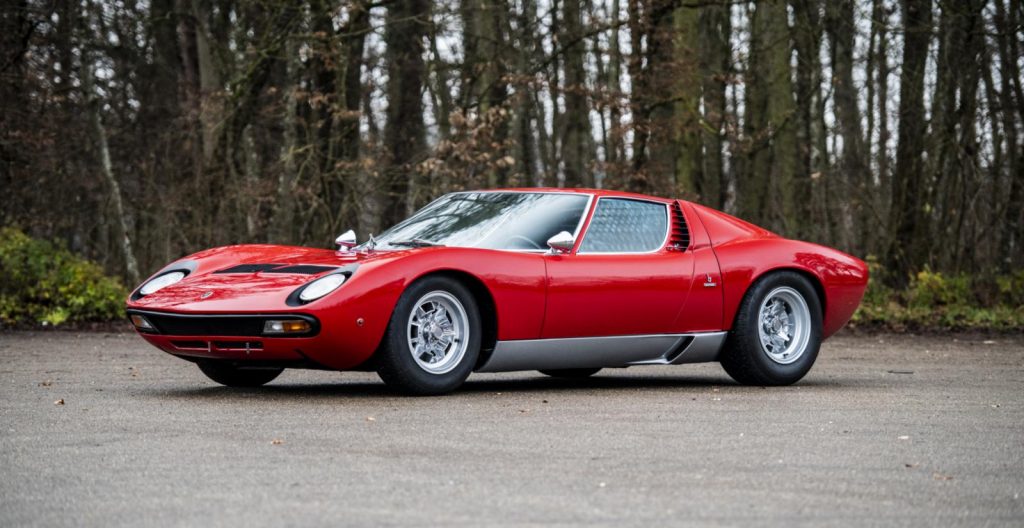
Business was going well until the 1973 oil crisis, which saw Ferruccio gradually move away from Lamborghini, with the company passing through the hands of several owners until, after declaring bankruptcy in 1978, Swiss industrialist Patrick Mimram assumed as CEO in 1980. In these difficult time is not surprising that Lamborghini remained officially away from the tracks, and only prototypes of independent builders using the mechanics of the Sant’Agata factory.
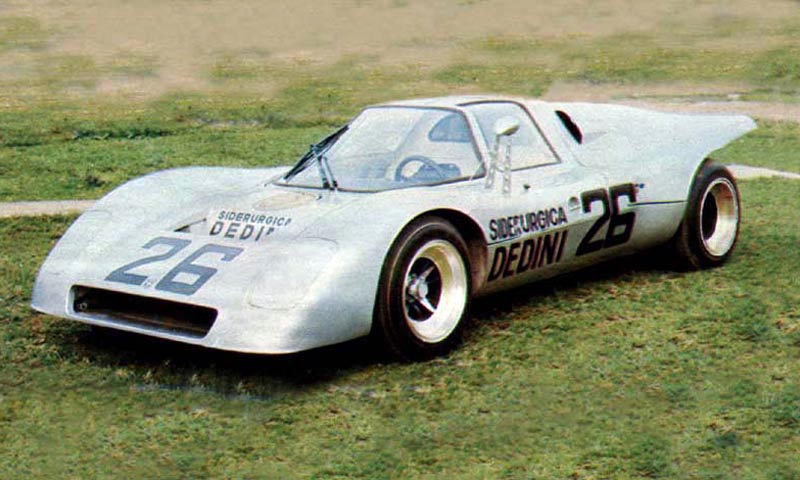
Then comes 1985 and David Joliffe, Lamborghini’s representative for the British market, enters the scene wishing to take the Lamborghini brand to the racetracks. Initially, Joliffe planned to turn the Countach LP5000S into a Group B race car, but his attempts were thwarted by the 200-unit minimum production limit required by the FIA, far above Lamborghini’s limited production. The way out then was to go straight to Group C, which had recently been implemented and was already growing in popularity.

Despite not being involved in motorsport, the Mimrans approved the development of V12 engines for Class 1 powerboat competitions, with engines over 8 liters and 720 HP. For his Group C car, Joliffe drew on Lamborghini’s experience in these competitions to transforming the street Countach’s engine into a racing engine capable of tackling long races like the 24 Hours of Le Mans. The volumetric displacement was increased from 5.2 to 5.7 liters, which together with the other modifications generated a maximum power of 650 HP (although it is said that during development Lamborghini reached 700 HP).
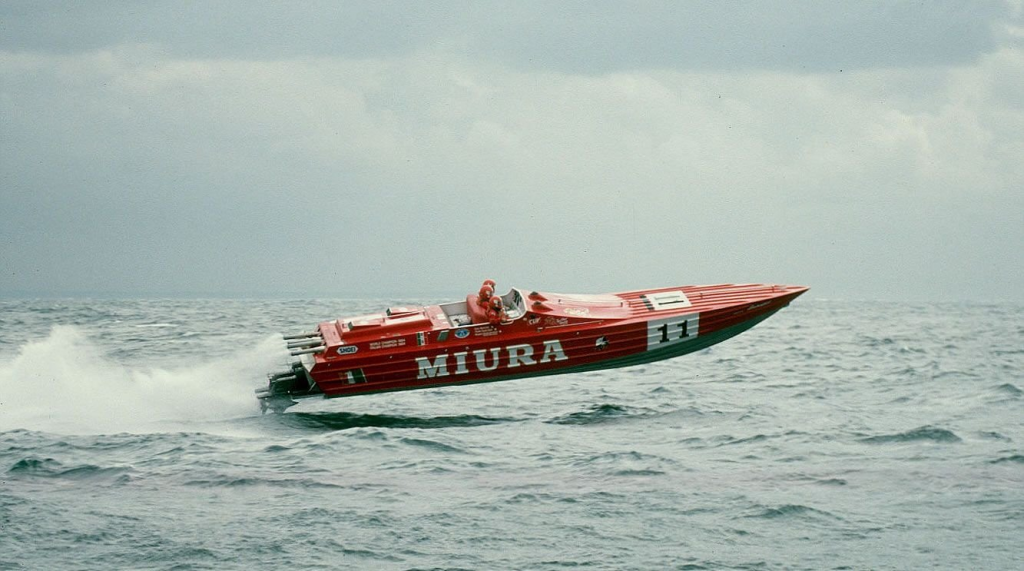
Mated to a 5-speed Hewland VG-C transmission, this engine was installed in a chassis developed by Spice Engineering on a Tiga GC84 chassis, which was given the serial number SL8501. The rear section of the original monocoque was modified to receive the new powertrain, which was mounted on a structural subframe. The suspension used pull rods at the front and push rods at the rear, with 13” brakes and 16” BBS wheels on all four wheels, shod with Dunlop slicks.

The bodywork was built in a 70/30 mixture of Kevlar and carbon fiber and some smaller parts in fiberglass, with an aerodynamic design typical of cars of the time such as the Porsche 956. The front has three NACA ducts (1 and 2), and the air intakes for the radiators are on the upper surface of the central region of the bodywork (3), venting hot air over the rear deck (4). The air intake for the engine (5) is also of the NACA type, and practically does not protrude above the roofline, demonstrating the car’s vocation for the long Hunaudières straight.
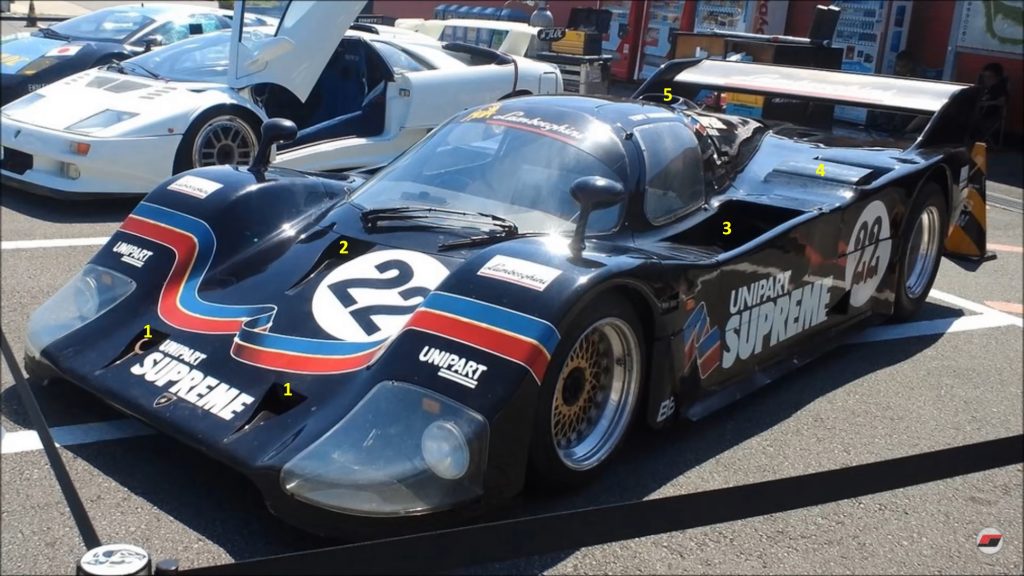
Na traseira o design também é convencional, com uma grande aerofólio de um elemento (6) e um difusor ainda maior (7). As lanternas traseiras (8), claramente inspiradas nas do Countach são possivelmente o único outro elemento além do motor que liga o QVX aos Lamborghini de rua.
At the rear, the design is also conventional, with a large single-element spoiler (6) and an even larger diffuser (7). The taillights (8), clearly inspired by those of the Countach, are possibly the only other element besides the engine that connects the QVX to the street Lamborghini.

The car was presented at an event in Monte Carlo offered by the main sponsor, Uniparts, at the time the biggest manufacturer of spare parts in the English market. Although it had little in common with the street car, the prototype was officially called the Countach QVX, and would be operated by the CC Motorsports team, with Tiff Needell and Mauro Baldi taking turns driving.
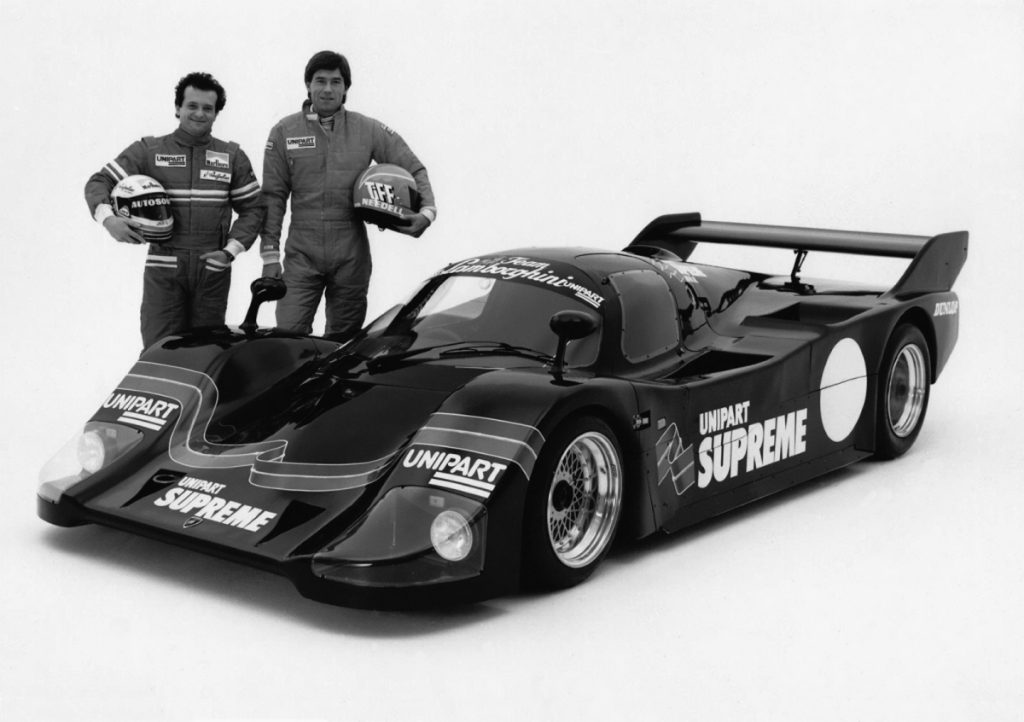
The project foresaw the team’s participation in that year’s Prototype Sport World Championship, but the team was unable to obtain other sponsors to make the operation viable. Thus, the only appearance of the Countach QVX in a race was in the Southern Suns 500 km, held in Kyalami, South Africa, an extra championship race divided into two heats, obtaining a fifth place in the general classification. Currently the car is with a Japanese collector, eventually participating in events related to the brand.
You may also be interested in:

MCR Grand Am (2016 – )
The most recent creation of renowned engineer Luiz Fernando Cruz, the MCR Grand Am was created by the pilot Fernando Poeta, using an engine and transmission from a Lamborghini Gallardo GT3. Among the achievements of the model are the overall victory of the 2016 12 Hours of Tarumã.
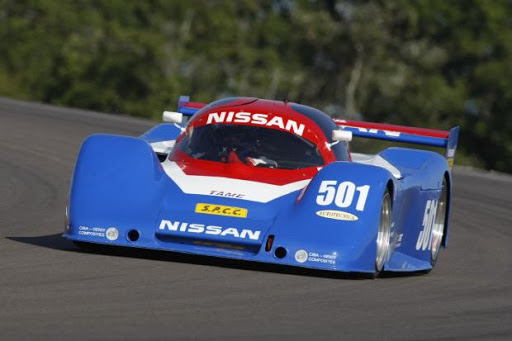
Tame 120-TA Nissan (1993 – 1996)
Let’s meet today the Tame 120-TA, a mini-Group C built for the Copa Tecate Nissan, a category played in Mexico in the early 90’s.
Sources:
Lamborghini Unipart-Countach QVX. Available at: https://web.archive.org/web/20120114081458/https://www.lambocars.com/archive/countach/qvx.htm.
LAMBORGHINI COUNTACH QVX – GUIDE. Available at: https://www.lambocars.com/countach-qvx-race-car/.
Complete Archive of Lamborghini Countach QVX. Available at: https://www.racingsportscars.com/type/archive/Lamborghini/Countach%20QVX.html.
The 1440 HP Lamborghini V12-Powered “CUV Miura” – 1984 UIM World Championship-Winner. Available at: https://silodrome.com/lamborghini-v12-powered-cuv-miura/.
MARINE POWER. Available at: https://www.lambocars.com/marine-power/
Tiga chassis numbers. Available at: http://www.wsrp.cz/chassis/chassis_tiga.html.
Lamborghini Countach QVX. Available at: http://f1-web-gallery.sakura.ne.jp/cn21/pg140.html.
Only one Lamborghini Countach QVX in the world. Available at: https://ameblo.jp/laferrarixx/entry-12267504192.html.
Lamborghini Countach QVX de 1985 – Fabriquée à 1 exemplaire pour le Groupe C. Available at: https://www.4legend.com/2019/lamborghini-countach-qvx-de-1985-fabriquee-a-1-exemplaire-pour-le-groupe-c/.


